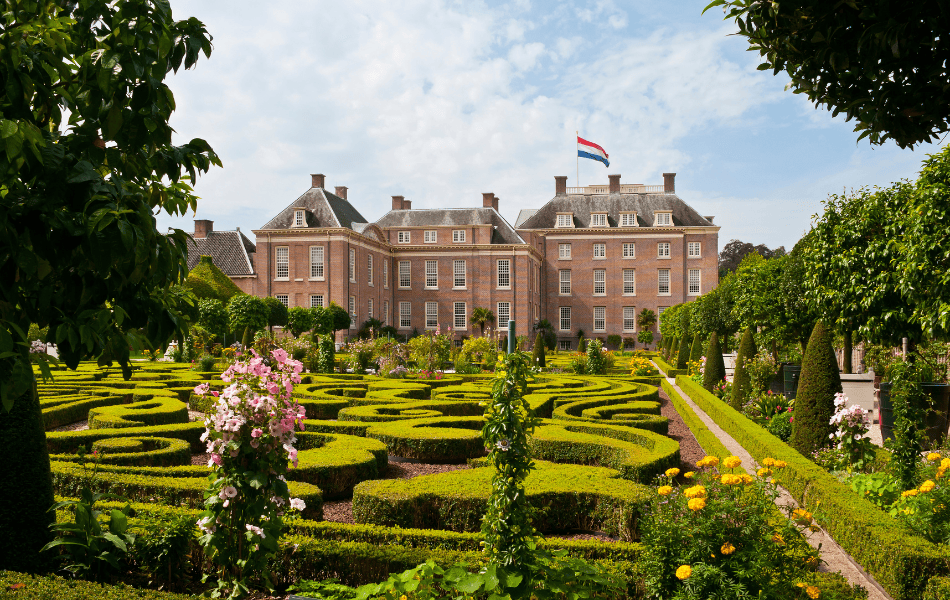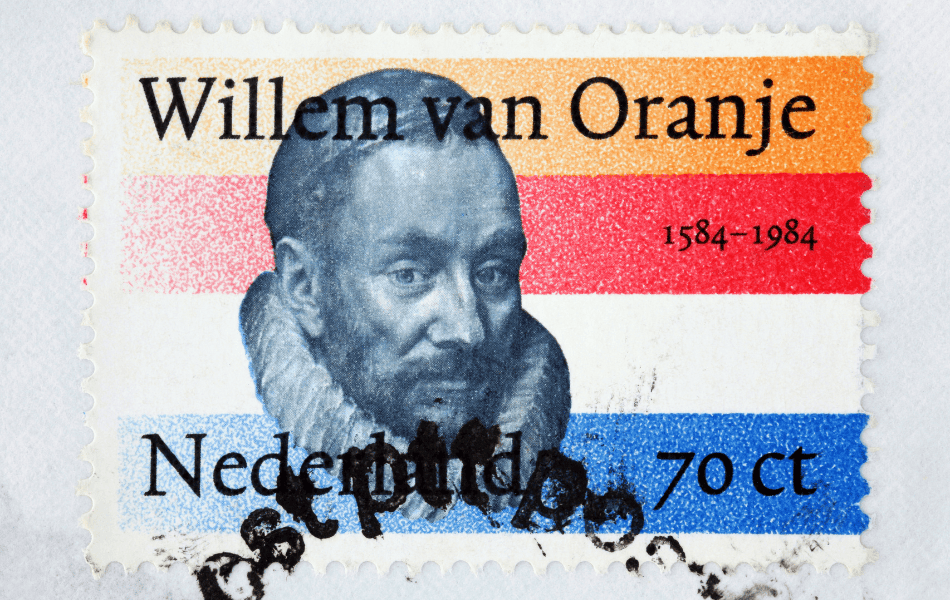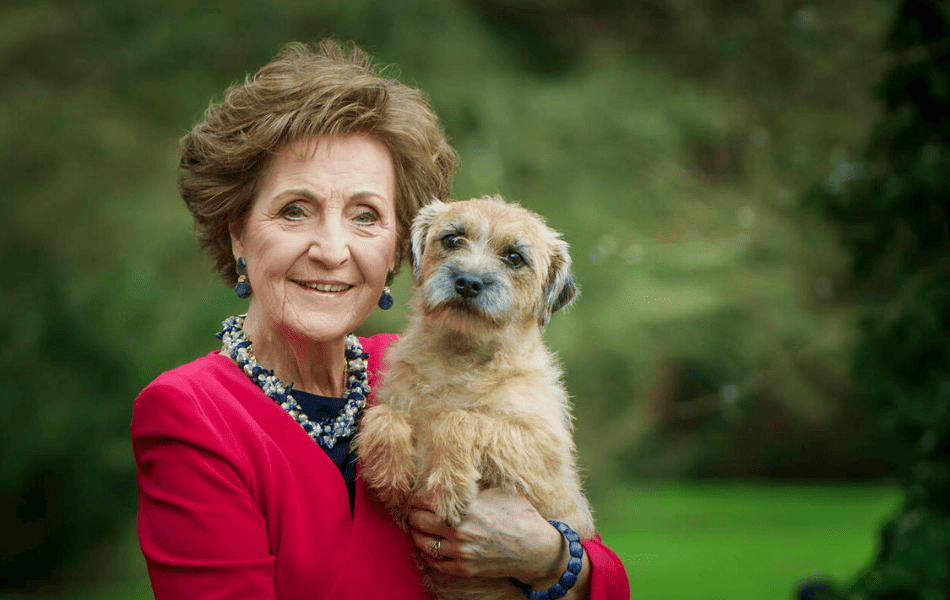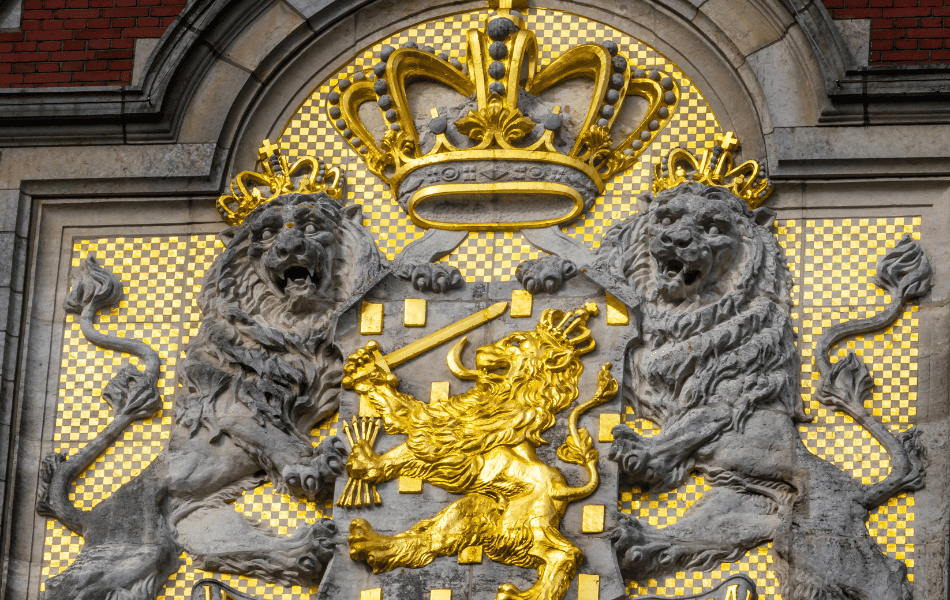“A Journey through Dutch Royalty – The House of Orange-Nassau,” where history unfolds, traditions enchant, and the legacy of the Netherlands comes to life.
In the elaborate web of European royalty, few threads weave a narrative as captivating as that of the Dutch royal family, the House of Orange-Nassau. Nestled within the folds of history, this regal lineage has not only borne witness to the evolution of the Netherlands but has actively shaped its destiny. As we delve on a journey through time, let us unravel the layers of this noble lineage and illuminate the role played by the House of Orange-Nassau in the annals of Dutch history.
From their illustrious origins to their contemporary significance, this exploration promises a glimpse into a world where tradition meets modernity, and where the echoes of the past resonate in the present. Join us as we step into the corridors of power and prestige, discovering the enduring legacy of the Dutch royal family, the House of Orange-Nassau. Read my article on Travel to the Kingdom of the Netherlands: a life experience which will give you a broader insight into the quirky and charming culture of the Netherlands.
A Royal Heritage Unveiled
House of Orange-Nassau
Unearthing the Ancestral Beginnings of the House of Orange-Nassau (12th – 16th Century)
The origins of the House of Orange-Nassau are deeply embedded in the historical tapestry of the Netherlands, with its roots stretching back to the 12th century. The House of Nassau, a Germanic lineage, played a pivotal role in laying the groundwork for what would become one of Europe’s most influential royal families.
The saga began with Count Dudo-Henry of Laurenburg, who, in the 12th century, established the House of Nassau in the German regions. Over the following centuries, the Nassau family expanded its influence through strategic marriages and diplomatic prowess.
The House of Orange, a parallel strand in this intricate narrative, gained prominence in the late 13th century with William I, also known as William the Silent, ascending as the first Prince of Orange. This elevation marked the family’s connection to the French Principality of Orange, serving as a prelude to their integration into Dutch affairs.
The turning point came in the early 17th century when William II of Orange, son of William the Silent, married Mary, Princess Royal and Princess of Orange. This union merged the Houses of Orange and Nassau, giving rise to the House of Orange-Nassau. The consolidation of these houses not only symbolized a familial alliance but also a convergence of their shared vision for the Dutch Republic.
The House of Orange-Nassau became intricately intertwined with Dutch history during the Eighty Years’ War (1568–1648) against Spanish rule. William the Silent’s strategic brilliance and leadership during this conflict were instrumental in securing the independence of the Dutch Republic. The family’s commitment to Protestantism further solidified their connection with the emerging Dutch identity.
Through this interweaving of the Nassau and Orange houses, the roots of the House of Orange-Nassau became deeply embedded in the soil of Dutch history. Their journey from German nobility to central figures in the struggle for Dutch independence showcases a legacy that continues to shape the narrative of the Netherlands to this day.
The Dutch Monarchy Today
In the ever-evolving landscape of Dutch society, the monarchy stands as a resilient pillar, adapting to the currents of change while preserving its historic significance. As of our knowledge cutoff in January 2022, the reigning monarch is King Willem-Alexander, who ascended the throne on April 30, 2013, following the abdication of his mother, Queen Beatrix.
The role of the Dutch monarchy in contemporary society is distinctly different from its historical counterparts. Today, the monarchy is more symbolic and ceremonial, embodying a unifying force rather than wielding political power. The Dutch constitution, notably revised in 1848, plays a pivotal role in defining the monarchy’s constitutional position.
The monarch’s role is largely ceremonial, involving state visits, diplomatic engagements, and participation in national events. King Willem-Alexander, for instance, has been actively involved in promoting Dutch trade and fostering international relations, adding a diplomatic dimension to the monarchy’s functions.
Over time, the constitutional role of the monarchy has evolved, mirroring societal shifts and political developments. The aforementioned constitutional revision in 1848 marked a significant turning point, introducing a parliamentary system and limiting the monarch’s powers. The monarch’s role became increasingly symbolic, emphasizing the unity of the Dutch people rather than wielding political authority.
In more recent decades, public perceptions of the monarchy have played a crucial role in its continued relevance. Queen Beatrix’s abdication in 2013 in favor of her son, King Willem-Alexander, was a voluntary transition that garnered widespread support. This transition underscored the monarchy’s ability to adapt to modern expectations while maintaining a sense of continuity.
In conclusion, the Dutch monarchy, with King Willem-Alexander at its helm, continues to play a vital but evolving role in contemporary Dutch society. Embracing its constitutional duties, the monarchy strikes a delicate balance between tradition and modernity, embodying a symbolic unity that resonates with the Dutch people.
Royal Residences: Palatial Gems of the House of Orange-Nassau (Various Dates)
The House of Orange-Nassau boasts a regal array of palaces, each a testament to architectural brilliance and historical significance. Let’s embark on a virtual tour of some of these iconic residences.

- Het Loo Palace:
- Built: The construction of this Dutch Baroque palace began in the late 17th century.
- Rooms: Het Loo Palace comprises over 160 rooms, each exuding grandeur and opulence.
- Gardens: The palace is renowned for its meticulously landscaped gardens, designed in the formal French style. The symmetrical patterns and meticulously manicured lawns offer a serene retreat.
- Anecdote: Within the opulent halls of Het Loo Palace, Queen Wilhelmina created a miniature palace for her daughter Princess Juliana. This intricately crafted dollhouse, complete with miniature furniture and artwork, remains a cherished testament to the royal family’s affectionate moments.
- Noordeinde Palace:
- Built: Originally constructed in the 16th century, Noordeinde Palace underwent subsequent renovations.
- Rooms: With approximately 40 rooms, the palace serves as a working palace for the Dutch monarch.
- Gardens: The palace gardens, a lush expanse with historic charm, are occasionally open to the public. They provide a tranquil oasis in the heart of The Hague.
- Anecdote: Noordeinde Palace, often used for official functions, witnessed a unique event in 2015. King Willem-Alexander temporarily transformed the palace into a pop-up restaurant for a charity event, showcasing the adaptability of these historic walls.
- Huis ten Bosch Palace:
- Built: This palace, situated in The Hague, dates back to the mid-17th century.
- Rooms: Huis ten Bosch Palace boasts around 80 rooms, blending classical elegance with modern amenities.
- Gardens: The palace is surrounded by expansive gardens featuring waterways and carefully designed green spaces, creating a picturesque setting.
- Anecdote: Huis ten Bosch Palace served as the residence for Queen Beatrix. Notably, it became the backdrop for a heartwarming tradition. Each year, on her birthday, the Queen would open the gates of the palace, allowing the public to stroll through the gardens and congratulate her—a gesture deeply appreciated by the Dutch citizens.
- Drakensteyn Castle:
- Built: Originally a medieval fortress, Drakensteyn Castle underwent renovations in the 17th century.
- Rooms: The castle has been a private residence, offering a more intimate setting with approximately 20 rooms.
- Gardens: Nestled in the scenic countryside, the castle is embraced by enchanting gardens that capture the essence of Dutch pastoral beauty.
- Anecdote: Princess Beatrix, following her abdication, chose the more intimate Drakensteyn Castle as her residence. Here, she immersed herself in various activities, including sculpture and gardening, highlighting the personal touch these royal residences bring to the lives of the Dutch monarchy.
While each residence holds its unique charm, they collectively serve as living witnesses to the history and legacy of the House of Orange-Nassau. Beyond their architectural splendor, these palaces have been witnesses to significant events and personal moments in the lives of the Dutch royal family, adding an extra layer of allure to their storied halls.
The Orange Connection: A Hue Woven into Dutch Culture and Royalty
In the kaleidoscope of Dutch culture, the color orange emerges as a vibrant thread, symbolizing a connection that runs deep within the veins of the nation. The House of Orange-Nassau, with its roots entwined in this vivid hue, has embraced orange not merely as a color but as a symbol of national identity.

Significance of Orange in Dutch Culture
The significance of orange in Dutch culture traces back to the 16th century when William of Orange, a key leader in the Dutch War of Independence, adopted the color as a symbol of unity and resistance. Over time, orange became synonymous with the fight for freedom and the establishment of the Dutch Republic.
Royal Ceremonies and Events
The House of Orange-Nassau has woven the color orange into the very fabric of royal ceremonies and events. One of the most prominent displays is Koningsdag, or King’s Day, celebrated on April 27. On this day, the entire nation adorns itself in a sea of orange, with festivities ranging from vibrant street markets to canal parades.
Interesting Facts about Orange in Royal Events

- Birth Rituals: When a royal heir is born, Dutch citizens eagerly await the unveiling of the newborn’s name and a glimpse of the royal family. The choice of an orange blanket to wrap the baby during the first public appearance has become a tradition, symbolizing the continuation of the House of Orange-Nassau.
- State Occasions: During state occasions and official events, members of the royal family frequently don orange attire or accessories, paying homage to the historical legacy of the House of Orange-Nassau. The vibrant hue not only reflects national pride but also fosters a sense of unity among the Dutch people.
Embracing Orange Through the Ages
The House of Orange-Nassau’s embrace of the color orange extends beyond clothing. From official flags to floral arrangements, orange is a constant presence in royal symbolism. Even the royal crest incorporates the color, reinforcing the enduring connection between the monarchy and the national identity of the Netherlands.
In conclusion, the orange connection is more than a color choice; it’s a symbol of resilience, freedom, and unity. Through the ages, the House of Orange-Nassau has kept this vibrant hue alive, weaving it into the very fabric of Dutch culture and ensuring that the orange legacy continues to shine brightly.
Lesser-Known Royals and Intriguing Facts

Introducing Lesser-Known Members
While the House of Orange-Nassau has its well-known figures, there exists a tapestry of lesser-known royals, contributing their own unique threads to the family’s legacy. One such figure is Princess Margriet, a sister of Queen Beatrix. Despite being less in the public eye, Princess Margriet has been a dutiful ambassador for the Netherlands, engaging in various charitable activities and representing the nation on the international stage.
Intriguing and Lesser-Known Facts
- Prince Claus’s Innovations: Prince Claus, the husband of Queen Beatrix, was not only known for his marriage to royalty but also for his innovative mind. He played a pivotal role in establishing the Prince Claus Fund, which supports cultural initiatives promoting dialogue and understanding.
- A Musical Monarch: Queen Juliana, who reigned from 1948 to 1980, had a penchant for the accordion. She was often seen playing this musical instrument, showcasing a more intimate and approachable side that endeared her to the Dutch people.
Unique Traditions and Customs
- Bicycle Diplomacy: The House of Orange-Nassau is known for its down-to-earth approach. Members of the royal family, including King Willem-Alexander, are often spotted cycling around, blending with the Dutch culture of bicycling. This informal mode of transport aligns with the family’s commitment to approachability and environmental consciousness.
- Prinsjesdag’s Carriage Ride: Prinsjesdag, or Prince’s Day, is an annual event featuring a unique carriage ride. The reigning monarch traditionally rides in the Golden Carriage to the Dutch Parliament, delivering the Throne Speech. This ceremonial ride is not only a visual spectacle but also a nod to the historical roots of the Dutch monarchy.
Unveiling these lesser-known royals and intriguing facts provides a more nuanced view of the House of Orange-Nassau. Their roles, quirks, and traditions weave a rich tapestry that extends beyond the well-documented narratives, revealing the diverse and fascinating aspects of this enduring royal family.
Royal Duties and Initiatives: A Commitment to Service

The House of Orange-Nassau goes beyond ceremonial duties, actively engaging in initiatives that address societal challenges. Their dedication to charitable causes, cultural preservation, and environmental stewardship reflects a family deeply rooted in the well-being and progress of the Dutch people.
Various Roles and Duties
Members of the House of Orange-Nassau play diverse roles, reflecting a dynamic engagement with Dutch society. King Willem-Alexander, as the reigning monarch, held a largely ceremonial position, attending state functions, representing the Netherlands internationally, and participating in royal events. Queen Máxima, known for her advocacy in finance and microcredit, complements the royal duties with a focus on economic empowerment.
Involvement in Charitable Activities and Social Initiatives
The commitment of the House of Orange-Nassau to charitable endeavors is integral to their public service ethos. Queen Máxima, for instance, is deeply involved in initiatives related to inclusive finance, striving to improve economic conditions for marginalized communities. Princess Laurentien is recognized for her dedication to literacy projects, emphasizing the transformative power of education.
Commitment to Public Service
The royal family’s commitment to public service is exemplified by their involvement in social, cultural, and environmental causes. King Willem-Alexander and Queen Máxima are patrons of numerous cultural institutions, emphasizing the importance of preserving and promoting Dutch heritage. Princess Beatrix, despite her abdication, remains active in various causes, emphasizing the continuity of the family’s commitment to public service across generations.
Notable Initiatives
- Orange Fund: King Willem-Alexander and Queen Máxima established the Orange Fund, focusing on social initiatives that promote social cohesion and community development. The fund supports a wide range of projects, from youth programs to initiatives addressing social inequality.
- Dutch Delta Works: Prince Bernhard, a member of the royal family, is an advocate for environmental causes. He has been involved in promoting awareness about climate change and played a role in the Dutch Delta Works project, showcasing a commitment to safeguarding the nation against environmental challenges.
Discover Dutch Royalty: A Tourist’s Odyssey through the House of Orange-Nassau
Commence on a captivating journey through Dutch Royalty, exploring the House of Orange-Nassau. While access to certain private areas may be restricted, visitors can marvel at the exterior grandeur of iconic palaces like Het Loo, Noordeinde, and Huis ten Bosch.
Immerse yourself in the rich history of lesser-known royals and discover intriguing facts. Witness the vibrant tradition of Koningsdag, where the entire nation bathes in orange. Indulge in the picturesque gardens surrounding these palaces, offering a tranquil retreat.
Experience the monarchy’s commitment to public service through charitable initiatives, contributing to a deeper understanding of the enduring legacy of Dutch royalty.
10 non-known facts about Dutch Royalty’s House of Orange-Nassau

- Culinary Influence: Queen Máxima is known for her culinary skills. She attended Leiths School of Food and Wine in London and even worked briefly as a banker before marrying King Willem-Alexander.
- Educational Advocacy: Princess Laurentien is a strong advocate for literacy. She co-founded the Missing Chapter Foundation, promoting children’s voices in policymaking and focusing on the importance of storytelling and literacy.
- Environmental Stewardship: Prince Bernhard is an avid environmentalist and founded The Black Fish, a non-profit organization dedicated to marine conservation and combating illegal fishing practices.
- Artistic Talents: Queen Beatrix, an accomplished artist, studied sculpture at the Royal Academy of Art. She even exhibited her artwork under the pseudonym “J. van der Velden.”
- Philanthropic Entrepreneur: Prince Constantijn, younger brother of King Willem-Alexander, is passionate about technology and entrepreneurship. He has been involved in numerous initiatives supporting startups and innovation.
- Flying Monarch: King Willem-Alexander is a skilled pilot and has served as a guest pilot for KLM, actively participating in flights. His passion for flying began during his military training.
- Renowned Diplomat: Princess Margriet, as a goodwill ambassador for the World Health Organization, has been actively involved in global health initiatives, particularly focused on immunization and maternal health.
- Historical Connection: Princess Amalia, the heir to the throne, is the firstborn daughter of King Willem-Alexander and Queen Máxima. When she ascends, she will be the first queen regnant in the Netherlands since 1890.
- Personal Initiatives: Queen Máxima has a keen interest in microfinance. She served as the UN Secretary-General’s Special Advocate for Inclusive Finance for Development, emphasizing financial inclusion for vulnerable populations.
- Philanthropy Beyond Borders: King Willem-Alexander and Queen Máxima established the Dutch Postcode Lottery’s “Dream Fund,” supporting international initiatives for a sustainable, fair, and green world.
Conclusion

In closing, the journey through Dutch Royalty’s House of Orange-Nassau unveils a rich history, vibrant traditions, and the family’s profound commitment to public service. From iconic palaces to lesser-known figures, this exploration invites visitors to witness the enduring legacy and cultural significance of the Dutch monarchy. There is so much to experience but I would advise you to practice hiking prior to your visit. You will be walked off your feet!
Recent Posts
Discover insider tips to find cheap flights from the UK, save on easyJet, Ryanair & BA, and score the best weekend and last-minute deals. Why You’re Paying Too Much for Flights Most UK...
Discover the sounds of travel, from laughing kookaburras to market chatter, church bells to ocean waves - a journey heard as much as seen. It always starts with a sound. The other day, walking...


One thought on “A Journey through Dutch Royalty – The House of Orange-Nassau”
Comments are closed.